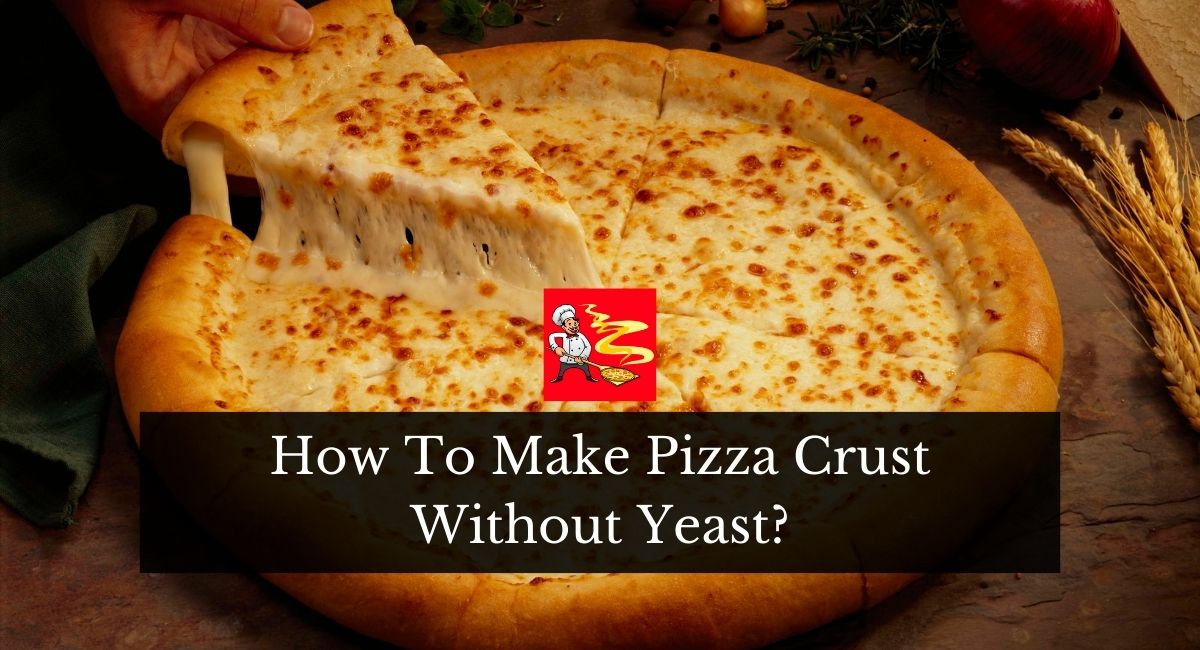The allure of a perfectly baked pizza, with its crispy crust and melted toppings, is universally acknowledged. However, traditional pizza crust recipes often call for yeast, an ingredient that might only sometimes be on hand or might be avoided due to dietary preferences. So, how does one achieve that delectable pizza base without it?
Fear not! There is a way to make pizza crust even without yeast. This article dives into the art and science of making pizza crust without yeast, ensuring you can enjoy this beloved dish anytime the craving strikes.
How To Make Pizza Crust Without Yeast?
One of the most popular ways to make pizza crust without yeast is to use baking powder. Baking powder is a actually chemical leavening agent that causes dough to rise. It is made up of a combination of baking soda, cream of tartar, and cornstarch.
To make pizza crust with baking powder, you will need the following ingredients:
Ingredients Need:
- 1 cup all-purpose flour
- 1/2 teaspoon salt
- 1/4 teaspoon baking powder
- 1/4 cup olive oil
- 1/4 cup warm water
Instructions:
- The oven should be heated to 400 degrees Fahrenheit (200 degrees Celsius).
- In a large basin, whisk together the flour, baking powder, and salt.
- In a separate basin, combine the water and olive oil with a whisk.
- Stir the liquid components into the dry ingredients until just combined. If you knead the dough too much, it will become tough.
- The dough should be smooth and elastic after 1 to 2 minutes of kneading on a gently floured surface.
- Form the dough into a disk, then transfer it to a baking sheet.
- Using your fingertips, roll the dough into a 12-inch circle.
- Bake the pizza for around 10 to 12 minutes, or until the cheese is melted and bubbling and the crust is golden brown.
Tips:
- For a crispier crust, preheat a baking sheet in the oven while it is preheating. Then, place the rolled-out dough on the hot baking sheet before adding the toppings.
- You can bake the pizza on a lightly greased baking pan if you don’t have a baking sheet.
- If you want a thicker crust, increase the amount of dough you use.
- If you want a thinner crust, roll out the dough to a larger circle.
- Be creative with your toppings! You can use any type of cheese, sauce, and vegetables that you like.
What Can I Use Instead Of Yeast In Pizza Dough?
You can use a few different things instead of yeast in pizza dough. The most common substitutes are baking powder and baking soda.
On of them is Baking powder, which is a leavening agent that contains baking soda & an acid, usually cream of tartar. When baking powder is mixed with water, it reacts to make carbon dioxide gas, which causes the dough to rise.
On the other hand, baking soda which is a leavening agent that works by reacting with an acid to produce carbon dioxide gas. Baking soda is not as powerful as baking powder, so you will need to use more of it to achieve the same rise.
Another substitute for yeast is a sourdough starter. A sourdough starter is a fermented flour and water mixture containing naturally occurring yeast. To use sourdough starter in pizza dough, simply replace half of the water in the recipe with sourdough starter.
Can I Use Curd Instead Of Yeast?
You can use curd (yogurt) instead of yeast in pizza dough. Curd contains lactic acid bacteria, which can leaven the dough in a similar way to yeast. However, the dough will not rise as much or as quickly as it would with yeast.
To use curd in pizza dough, simply replace half of the water in the recipe with curd. For example, if a recipe asks for 1 cup of water, you would use 1/2 cup of water with 1/2 cup of curd.
Also Read: Best Thin Crust Pizza Dough Recipe In The World
Bottom Line
Making a pizza crust without yeast is feasible and can yield delicious results. By using alternative leavening agents like baking powder or incorporating ingredients like yogurt, you can achieve a flavorful crust with a desirable texture.
While the end product might differ slightly from traditional yeast-based crusts, these no-yeast variants offer a quick, convenient, and equally satisfying alternative.
With the right techniques and ingredients, your homemade, yeast-free pizza crust can be the perfect canvas for your favorite toppings.

